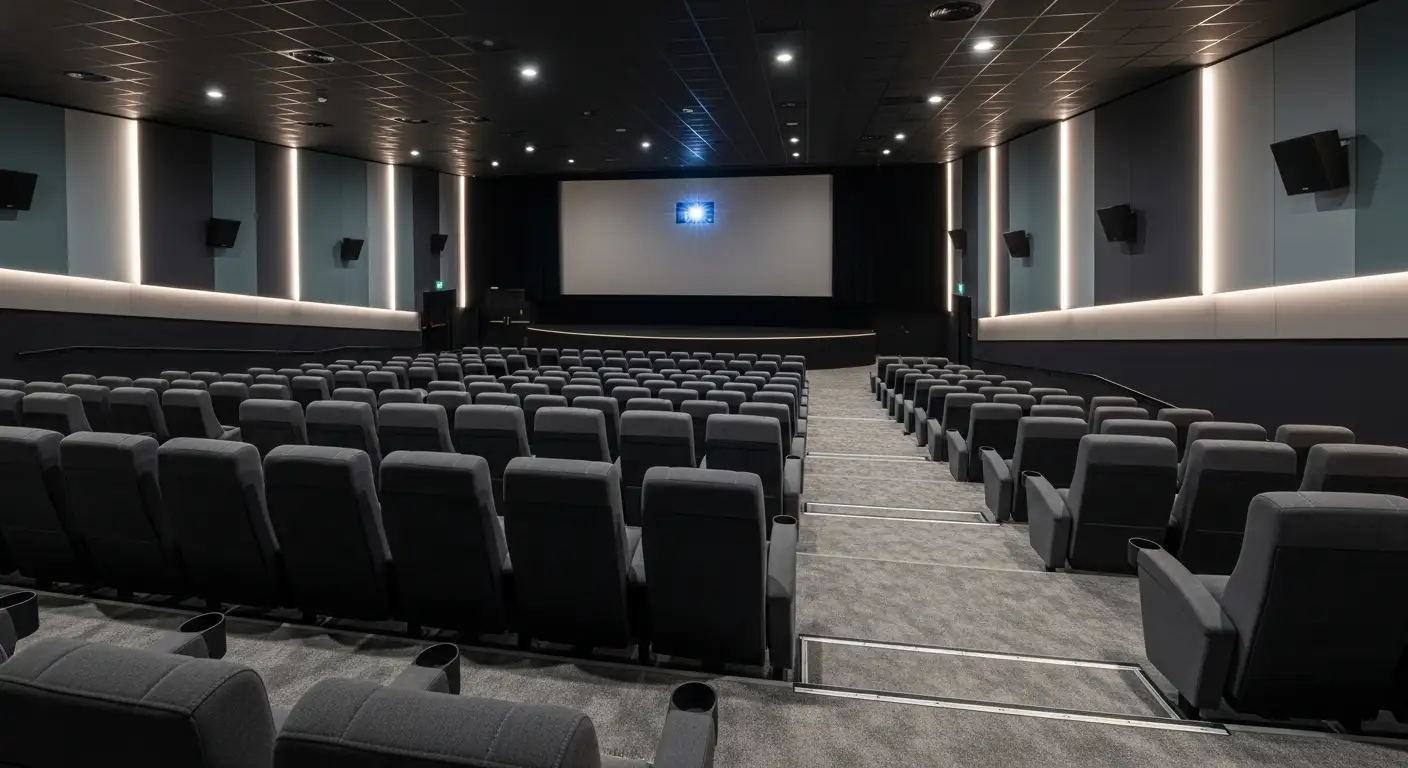When Is Autism Diagnosed?
A Lifelong Journey Begins with Early Identification
Autism spectrum disorder (ASD) begins in early childhood, with signs often detectable within the first year of life. Early diagnosis is critical as it opens the door to timely interventions that can significantly improve developmental outcomes. This article explores when autism is usually diagnosed, the early indicators to watch for, the steps involved in the diagnostic process, and factors influencing the timing of diagnosis across different age groups.
Early Onset and Biological Indicators of Autism

Signs of autism in infancy and toddlerhood
Autism can present subtle signs even in the earliest stages of development. Some infants display limited eye contact, fewer joyful expressions, and delayed responses to social cues, which might become noticeable as early as 6 months. During the toddler years, children may show delays in babbling, gestures, and responding to their names. They might also exhibit a lack of interest in play and difficulty in imitation. By 12 to 18 months, many children on the spectrum do not follow gaze, do not point to share interest, and may have challenges with joint attention.
Biological markers observable at 6 months
Research indicates that there are early biological differences in children who develop autism. Variations in brain activity, structures, and connectivity can be detected as early as 6 months. These differences include atypical neural responses and structural brain variations, which serve as potential biological markers for identifying children at risk. Such early indicators suggest that autism begins in the earliest months of life, even before behavioral symptoms fully manifest.
Developmental milestones and delays
Typically, children reach certain developmental milestones in speech, social interaction, and motor skills within specific age ranges. For children on the spectrum, these milestones may be delayed or development may regress. For example, by 12 months, most children babble or respond to their names, whereas children with autism may show no response or delayed vocalizations. Between 16 and 24 months, a lack of meaningful two-word phrases or gestures becomes more evident.
Monitoring these milestones through regular development checks is crucial. Delays in social communication—such as limited eye contact, poor gesturing, or delayed speech—and repetitive behaviors or restricted interests are strong indicators of autism. Early detection through behavioral observation and biological insights can lead to timely intervention, significantly improving developmental outcomes for children.
| Age Range | Typical Developmental Milestones | Signs of Autism | Biological Insights |
|---|---|---|---|
| 6 months | Smiles, makes eye contact, responds to sounds | Limited eye contact, fewer smiles | Brain connectivity differences observable |
| 9 months | Babbles, responds to name | No response to name, limited imitation | Changes in neural activity |
| 12 months | Uses gestures, responds to name | No gestures, no joint attention | Structural brain variations |
| 16 months | Says first words, mimics actions | No spoken words, lack of play | Early brain structure differences |
| 24 months | Combines words, plays socially | No meaningful words, limited social play | Persistent neural connectivity differences |
Recognizing these early signs and biological signals is vital for prompt assessment and intervention, helping children with autism to reach their full potential.
Developmental Milestones and Warning Signs in Different Age Groups

Typical developmental milestones
Children generally develop core skills such as babbling, responding to their name, making gestures, and eye contact within the first year. By 12 months, many speak simple words and follow gaze or pointing cues. At around 2 years old, children should be able to say meaningful two-word phrases and engage in pretend play.
Age-specific signs of autism
Early signs of autism can appear as early as 6 months, including limited eye contact and fewer joyful expressions. By 12 months, signs may include no response to name, delayed babbling, and lack of gestures like pointing or waving. At 16 months, children with autism might have difficulty speaking, show repetitive movements, or ignore social cues. By 24 months, absence of meaningful words or phrases and limited social interaction are common indicators.
Older children and adolescents may show social disinterest, difficulty making friends, speech challenges such as unusual tone, or rigidity in routines and behaviors. These signs tend to become more evident as social expectations increase.
Regression of skills
Some children with autism experience regression, losing language, social, or play skills they previously acquired. This usually occurs between ages 1 and 2, often around 18 months, but can happen earlier. Regression is a sign that prompt evaluation and intervention are needed.
Why is early screening and detection important for autism, and what guidelines exist?
The importance of early screening and detection lies in the opportunity for timely intervention, which can significantly improve outcomes in language, social skills, and cognition. The American Academy of Pediatrics recommends screening for ASD at 18 and 24 months during routine well-child visits.
Screening tools such as the Modified Checklist for Autism in Toddlers, Revised (M-CHAT-R), are used to assess early behaviors indicating risk for autism. If results are positive, children are referred for comprehensive assessment by specialists like pediatric neurologists or psychologists.
Early diagnosis allows children to access behavioral interventions as young as possible, harnessing brain plasticity for better development. Following these guidelines ensures consistent screening and early treatment, leading to improved long-term potential for children on the autism spectrum.
The Diagnostic Process: From Screening to Formal Evaluation

What is the diagnostic process for autism, including screening, assessments, and evaluation tools?
The journey to diagnosing autism begins early in a child's development, primarily through routine developmental monitoring and screening. Pediatricians and healthcare providers use specific screening tools at well-child visits, notably at 18 and 24 months, to identify early signs of autism.
One of the most common screening questionnaires is the Modified Checklist for Autism in Toddlers, Revised (M-CHAT-R), which assesses children between 16 to 30 months for potential autism spectrum disorder (ASD). These questionnaires serve as initial indicators, highlighting children who may need further evaluation.
When screening tools suggest possible concerns, children are referred for comprehensive assessments conducted by specialists. These evaluations are thorough, involving detailed developmental history, behavioral observation, and standardized diagnostic instruments. Specialists such as developmental pediatricians, psychologists, speech-language pathologists, or child neurologists perform these assessments.
The most recognized diagnostic tools include the Autism Diagnostic Observation Schedule (ADOS-2) and the Childhood Autism Rating Scale (CARS). These tools help clinicians observe behaviors, communication skills, and social interactions to identify whether a child meets the criteria for ASD.
Crucially, the diagnosis aligns with the DSM-5 criteria, which specify that a child must show persistent deficits in social communication and interaction, along with restricted and repetitive behaviors. This comprehensive approach ensures that the diagnosis of autism is accurate, considering the individual child's developmental profile.
It is important to note that there is no blood test or medical biomarker for autism. Instead, diagnosis relies entirely on behavioral observation, history-taking, and standardized assessments. Early detection through this process enables timely intervention, which can significantly improve developmental outcomes.
| Step | Description | Relevant Tools | Purpose |
|---|---|---|---|
| Screening | Routine development checks using questionnaires like M-CHAT-R | M-CHAT-R, SACS-R, AWAIT | Identify children at risk for ASD |
| Assessment | In-depth review of behavior and development by specialists | ADOS-2, CARS, ADI-R | Confirm diagnosis and determine needs |
| Diagnostic Criteria | DSM-5 guidelines for ASD | DSM-5 | Standardize diagnosis based on core features |
Timing Variations and Factors Affecting Diagnosis Age

How do factors such as age influence the timing of an autism diagnosis?
The age at which autism is diagnosed varies widely, influenced by biological, behavioral, and social factors. Signs of autism can be observed as early as 6 months in some cases, with early biological differences in brain activity sometimes detectable at this age. However, most children receive a formal diagnosis around age 3 or later.
Developmental milestones and screening practices play a central role. For example, the American Academy of Pediatrics recommends autism screening at 18 and 24 months. Many children show symptoms like delayed speech, limited eye contact, or social disinterest during these ages, prompting further evaluation.
Early diagnosis is crucial because it allows for prompt intervention, which can significantly improve outcomes. However, disparities exist. Children from minority backgrounds or girls are often diagnosed later due to less recognition of early signs or sociocultural factors. In some cases, subtle symptoms or masking behaviors mask autism signs, delaying diagnosis until adolescence or adulthood.
Older children and teenagers can also be diagnosed, particularly if symptoms are mild or overlooked earlier. The diagnostic process involves careful observation of behavior, developmental history, and standardized assessments, often revealing autism later in life when social or academic challenges become more apparent.
Influence of gender and socioeconomic factors
Gender plays a role in diagnosis timing. Boys tend to be diagnosed earlier—often around age 4—because their symptoms are typically more overt. Girls, however, may exhibit subtler signs or better masking abilities, leading to later diagnosis, sometimes around age 7 or beyond.
Socioeconomic factors impact access to screening and diagnostic services. Children from higher-income families or with health insurance are more likely to undergo early screening and assessments, leading to earlier diagnosis. Conversely, families with limited resources or access to healthcare may face delays.
Developmental delays and regression
Some children with autism show typical development initially but then regress, losing skills like speech or social interactions, usually between 12 to 24 months. This regression often prompts diagnosis later than in children with persistent early signs.
In summary, early detection relies on active screening, parental awareness, and healthcare access. Factors like gender, socioeconomic status, and the child's developmental trajectory influence when autism is identified and diagnosed.
| Aspect | Typical Diagnosis Age | Influencing Factors | Additional Details |
|---|---|---|---|
| Early signs observable | 6-12 months | Developmental delays, regression | Some biological indicators detectable from 6 months |
| Formal diagnosis | 2-4 years | Screening schedules, parental concern | Screening tools like M-CHAT-R are used |
| Later diagnosis | School age or adolescence | Subtle symptoms, masking, access barriers | Sometimes diagnosed only when social difficulties emerge |
Understanding these factors highlights the importance of regular screening and awareness to facilitate early diagnosis, which is crucial for optimal intervention.
The Significance of Early Detection and Intervention
What role do professionals play in diagnosing autism, and what criteria do they use?
Diagnosing autism spectrum disorder (ASD) involves careful observation and evaluation by trained specialists such as pediatricians, child neurologists, psychologists, and speech-language pathologists. These professionals gather comprehensive information about a child's developmental history and behavior through interviews, standardized assessments, and direct observation.
The primary tools used include the Autism Diagnostic Observation Schedule (ADOS-2) and the Autism Diagnostic Interview-Revised (ADI-R). These assessments help identify behaviors characteristic of autism, such as difficulties in social communication, nonverbal interactions, and repetitive behaviors.
Furthermore, clinicians adhere to the criteria outlined in the Diagnostic and Statistical Manual of Mental Disorders, Fifth Edition (DSM-5). According to DSM-5, a diagnosis of ASD requires persistent challenges in social communication and interaction across multiple settings, along with restricted and repetitive patterns of behavior, interests, or activities. These symptoms must be evident in early development, though they might become more noticeable as social demands increase.
While medical tests like blood work can rule out other conditions, they do not diagnose autism directly. Diagnoses typically involve a multidisciplinary approach, ensuring that assessments are thorough and accurate.
Early professional evaluation is essential because it opens the door to early intervention programs. These interventions are proven to improve developmental outcomes significantly, helping children reach their potential and better-equipped to navigate their social and learning environments.
Final Thoughts: Long-Term Implications of Timely Diagnosis
Lifelong Impact of Early Detection
Detecting autism as early as 6 months, and reliably diagnosing by age 2, can significantly alter a child's developmental trajectory. Early diagnosis enables intervention with behavioral therapies that can improve communication, social skills, and adaptive behaviors. Children diagnosed early have a greater chance of reaching their full potential, reducing the need for intensive support later in life.
Advances in Understanding and Diagnosis
Our knowledge of autism has grown substantially, with MRIs showing differences in brain activity and structures observable in infants as young as 6 months. Diagnostic tools like the M-CHAT-R and comprehensive evaluations by specialists help identify signs at earlier ages. The use of standardized criteria, such as the DSM-5, and assessment tools like the ADOS-2, enhance diagnostic accuracy.
Remaining Challenges and Future Directions
Despite progress, diagnosing autism remains complex due to its wide variability in presentation. Many children are still diagnosed after age 3, missing early intervention opportunities. Future research aims to identify biological markers, develop less invasive screening methods, and understand early brain changes better.
| Aspect | Current Status | Future Goals | Additional Notes |
|---|---|---|---|
| Diagnostic age | Average around 3 years, earlier in some cases | Aim for diagnosis even before infancy | Early signs sometimes detectable at 6 months |
| Screening tools | M-CHAT-R, ADOS, DSM-5 criteria | Develop biomarkers and more accessible screening tests | Biological research continues to expand understanding |
| Intervention outcomes | Improved with early diagnosis | Refine therapies further for better long-term outcomes | Emphasis on individualized intervention plans |
Ultimately, recognizing autism early not only transforms individual lives but also informs the evolving landscape of neurodevelopmental research.
Early Diagnosis Paves the Way for Better Outcomes
Recognizing the signs of autism early and understanding the diagnosis process are pivotal steps toward supporting individuals on the spectrum. Early intervention not only enhances developmental skills but also fosters independence and social integration throughout life. While diagnosis typically occurs between 2 and 4 years of age, vigilance in watching for early signs—such as limited eye contact, delayed speech, and social difficulties—can lead to earlier assessments and services. Advances in screening tools and diagnostic criteria continue to improve detection, though disparities remain. With ongoing research and awareness, the goal is to ensure every person with autism receives timely support, unlocking their full potential.
References
- Signs of autism | Autism Speaks
- Screening for Autism Spectrum Disorder - CDC
- When do children usually show symptoms of autism? | NICHD
- How early can you — and should you — diagnose autism?
- "Could My Child Have Autism?" Ten Signs of Possible Autism ...
- Autism spectrum disorder - Symptoms and causes - Mayo Clinic
- 5 Reasons Why Autism Diagnosis Is Delayed - Smita Tandon, MD
Other articles
Recent articles

Cultural Perspectives On Autism Around The World

Autism And Creative Arts As Emotional Expression Tools

Developing Emotional Regulation Skills In Autistic Teens

Best Sensory-Friendly Lighting Solutions For Autism

Cognitive Behavioral Therapy Adaptations For Autism

Best Practices For Autism-Friendly Movie Screenings

Autism And Eating Challenges Beyond Picky Eating

Best Practices For Autism-Friendly Public Transport Design

Best Ways To Foster Collaboration Between Parents And Schools For Autism Support

Supporting Autistic Children During Transitions Between Activities

The Role Of Teachers In Fostering Autism Peer Acceptance

Using Art Therapy To Support Children With Autism

Autism And Strategies For Addressing Sensory Defensiveness

Autism And The Benefits Of Structured Leisure Activities

How To Support Autistic Students During Exam Season

Autism And Goal Setting For Personal Growth

How To Use Gamification In Autism Learning Programs

How Schools Can Reduce Bullying Of Autistic Students

Early Intervention Strategies For Autism Spectrum Disorder

The Role Of Therapists In Autism Life Skills Coaching

How To Support Autistic Individuals In Crisis Situations

Autism And Self-Care Routines For Stress Management

Understanding Echolalia And Its Role In Autism Communication

Autism And Fine Arts Education Benefits

The Impact Of Multisensory Learning On Autism Education

How Family Counseling Supports Autism Household Dynamics

Best Practices For Inclusive Playgrounds For Autism

Best Practices For Autism-Friendly Shopping Centers

How Autism Affects Fine Motor Skill Development

Best Ways To Introduce Sensory Activities Into Daily Routines

How Sports Teams Can Be Inclusive Of Autistic Players

Autism And Strategies For Building Workplace Resilience

Autism And The Impact Of Hormonal Changes During Puberty

How To Support Autistic Students In Foreign Language Classes

Best Ways To Teach Money Skills To Teens With Autism

Supporting Siblings Of Children With Autism

Autism And Co-Occurring Gastrointestinal Disorders

The Role Of Art Projects In Autism Sensory Integration

How Schools Can Incorporate Sensory Break Spaces

Best Practices For Autism Sensory Regulation At School

Autism And Strategies For Teaching Organizational Skills

Understanding The Relationship Between Autism And Anxiety Disorders

Autism And Life Planning For Long-Term Care

Exploring Visual Supports In Autism Education

Ways To Encourage Social Interaction In Children With Autism

The Connection Between Autism And Dyscalculia

The Role Of Occupational Therapy In Transition Planning For Autism

The Role Of Physical Therapists In Autism Motor Skills Support

How To Teach Decision-Making Skills To Autistic Young Adults

The Connection Between Autism And Epilepsy

Best Practices For Transitioning Autistic Children Into New Schools

Autism And Time Management Challenges In Adulthood

The Role Of Visual Arts In Autism Communication Development

How To Address Tactile Defensiveness In Autism

Best Practices For Telehealth Autism Therapy

How To Help Autistic Children Develop Friendship Skills

How Schools Can Support Autistic Students In Career Prep

Best Strategies For Autism-Friendly Event Planning

Understanding Noncontingent Reinforcement In Autism Behavior Plans

How Drama Therapy Benefits Autistic Individuals

Best Practices For Autism-Friendly Fitness And Recreation Centers

Best Ways To Promote Healthy Social Media Use For Autistic Teens

How To Help Autistic Children Cope With Public Speaking

Autism And Strategies For Managing Unexpected Changes

Best Podcasts About Autism For Parents And Educators

Autism And The Impact Of Seasonal Changes On Behavior

The Role Of Diet In Managing Co-Occurring Conditions With Autism

Sleep Challenges In Autism And Practical Solutions

Best Ways To Build Daily Routines For Autistic Children

Best Practices For Supporting Autistic Entrepreneurs

Autism And Strategies For Navigating Large Social Gatherings

Adaptive Sports And Recreational Activities For People With Autism

Autism And The Benefits Of Story-Based Learning Activities

Understanding The Role Of Play In Autism Development

Autism And The Impact Of Environmental Noise On Learning

How To Create Autism-Friendly Community Spaces

Autism And Chronic Health Conditions: What To Know

The Role Of Care Managers In Autism Life Planning

How To Teach Social Boundaries To Autistic Children

How Autistic Individuals Experience Empathy Differently

How To Support Autistic Employees In Remote Work Settings

Autism And The Relationship Between Motor Skills And Learning

How To Create Community Resource Guides For Autism Families

How To Teach Daily Living Skills To Autistic Teens

Autism And The Impact Of Mind-Body Practices On Stress Reduction

Autism And The Benefits Of Outdoor Group Activities

How To Create Autism-Friendly Sensory Paths In Schools

Best Practices For Autism-Friendly Park And Recreation Areas

Autism And Strategies For Reducing School Refusal

Supporting Autistic Individuals In Public Speaking

The Role Of Diet In Managing Autism Symptoms

The Benefits Of Gardening Clubs For Autism Social Development

How To Prepare Autistic Children For Dental Visits

Autism And Employment: Career Paths That Work

Best Practices For Autism-Friendly Hotels And Lodging

The Impact Of Screen Time On Autism Development

Autism Screening Tools For Early Childhood

The Role Of Physical Exercise In Autism Therapy

Best Strategies For Supporting Autistic College Students

The Role Of Technology In Autism Early Detection
We’re All About You, Your Family, and Your Child

